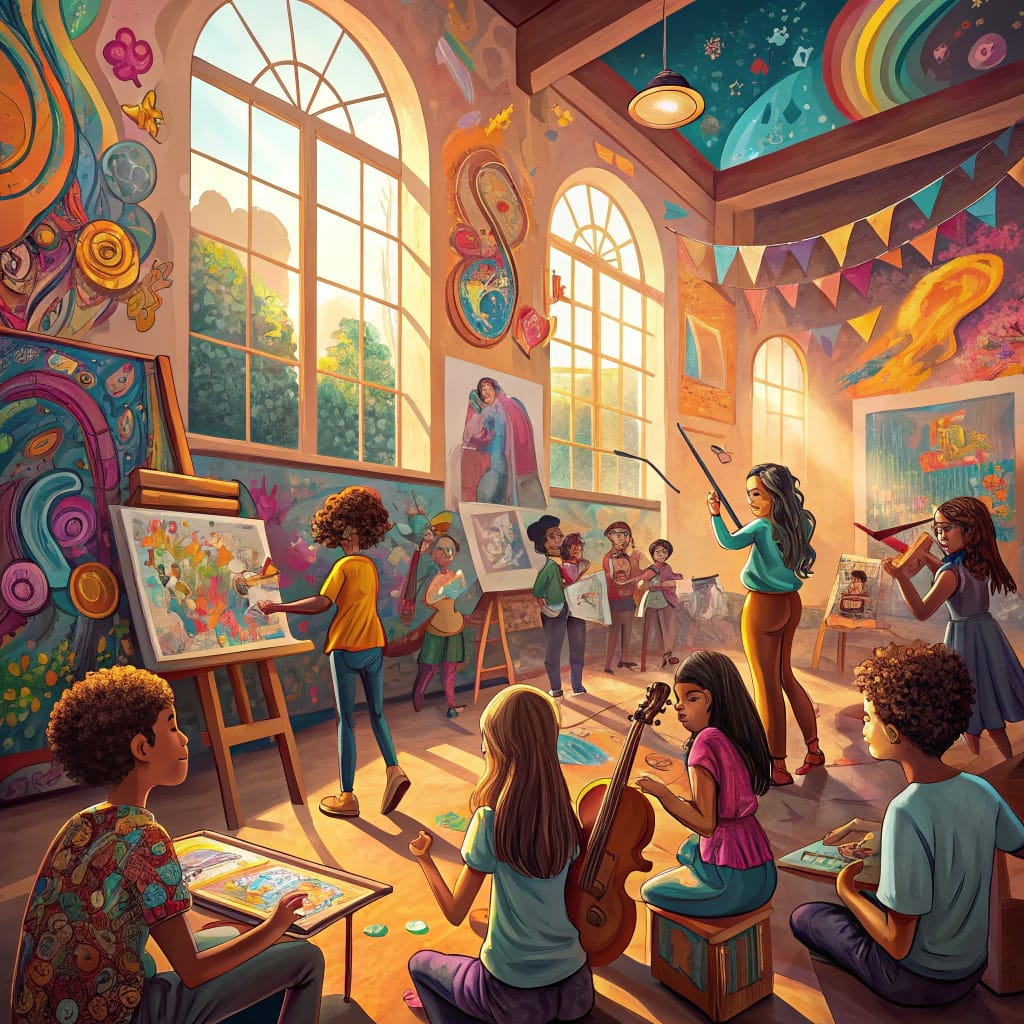What do Spiral Dynamics stages Purple, Red, and Blue look like in the arts? This video features an overview of each stage plus many examples of each stage as it shows up in the arts.
Spiral Dynamics is a developmental model that describes the various stages of evolution that humans go through both individually and collectively, and which can help us understand how the growth of consciousness affects all areas of life, including the arts.
Learning about how each stage shows up in the arts can help you grow and develop as a person, and then make art from that more developed place. Doing so will benefit your artistic life at all levels: how you feel, how you create, and the impact your art has on your audiences. The best starting place to gain these benefits is simply to learn about developmental models like Spiral Dynamics and begin applying them to your own life.
Each of the descriptions include the following:
– Basics, including an overview of its worldview and sphere of concern, core values, motto, and percentage of world population at this stage
– How a society at the stage views the arts and artists in general – A selection of specific manifestations in the arts
– How the stage views mistakes and success
– A list of examples
– Basics, including an overview of its worldview and sphere of concern, core values, motto, and percentage of world population at this stage
– How a society at the stage views the arts and artists in general – A selection of specific manifestations in the arts
– How the stage views mistakes and success
– A list of examples
00:00 Overview
02:30 The arts at stage Purple
08:00 The arts at stage Red
11:50 The arts at stage Blue
16:10 The importance of integrating all the stages
02:30 The arts at stage Purple
08:00 The arts at stage Red
11:50 The arts at stage Blue
16:10 The importance of integrating all the stages
This video features an excerpt from Chapter 7 “Spiral Dynamics & the Arts” of my upcoming book. Read the full excerpt from this video on below.
Be among the first to know about my upcoming book “Soulforce Arts: The Vital Role of Musicians & Artists in Creating a More Beautiful World” by signing up for my mailing list at JosephArnold.com.
Joseph Arnold Violinist, Alexander Technique Teacher, Director of the Soulforce Arts Institute
Purple—“Magic”
Feeling “at home,” safety, tradition. Motto: “I sacrifice myself for the sake of the clan and the existential reality.”
Basics. Purple is all about safety, tradition, and belongingness. Its worldview is that the world is frightening and mysterious, and that spirits must be placated and people must join together to survive. Morally, Purple is collectivist and its circle of concern is limited to its immediate family members within the tribe (about 150 people). The individual self is not fully differentiated from the tribe. Purple is at its best in creating a safe, warm environment, social-emotional bonding, loyalty, and in the use of intuition and imagination. Purple is at its worst in its fixed adherence to rules, closed-mindedness, clinging to the past, and its “us vs. them” mentality. Purple first developed approximately 50,000 years ago and currently comprises 10% of the world’s population.
How society views the arts. In Purple societies, there isn’t an idea of the arts, as such; instead, the arts are integral to every aspect of society, showing up in traditional crafts and folkways that give form to the built environment and religious needs. Everyone in the community considers themselves to be an artist or craftsmen in some way. In Purple, the role of the arts is to affirm the togetherness and identity of the tribe, to pass on the tribe’s traditions, and to participate in the sacred and mysterious workings of nature.
Contemporary manifestations in the arts. In contemporary arts contexts, Purple shows up as the sense of bonding with fellow cast members, regarding performance as mystical communion with the larger forces of nature, keeping your body or your instrument safe, the use of applause, belief in back-stage superstitions (e.g., “Break a leg!”), the establishment of basic routines, the enjoyment of repetition and basic motor skills, the use of lucky charms, learning from and honoring elders, learning by rote, the passing down of traditions, the attitude: “If it was good enough for grandad, it’s good enough for me,” the feeling of trust and connection between teachers, students, or colleagues, the use of a special space for creating or teaching, and the advice to “Slow down and just do what I say.”
Mistakes and success. To Purple, mistakes are a sign of disobedience to the all-powerful and mysterious authority/deity/parent and are worthy of punishment, whether or not the error was accidental. Success happens when the authority/deity/parent is happy. Someone at Purple, upon seeing a mistake, might say, “The gods will be angry!” The primary emotions around mistakes are fear and shame.
Examples in the arts. Indigenous forms of drumming, chanting, and dance, work songs, folk music, traditional handicrafts, the use of weaving as an aid in remembering the tribe’s history and legends, indigenous “porquoi”stories (like that of how the leopard got his spots), Australian Aboriginal song lines, folk dance forms like square dancing, injunctions against certain forms of music or art, and any oral traditions that are passed down generation to generation.
Blue—“Authoritarian”
Order, rules, transparency. Motto: “I sacrifice myself to the Way for a deferred reward.”
Basics. Blue is all about order, rules and roles, morality, and a higher purpo se. Its worldview is that the world is divinely ordered, and that the “wrong” views are to be punished and the “right” views are to be rewarded. Blue is at its best in its professionalism, dedication, honor, sense of fairness, and service to a good cause. Blue is at its worst in its cold, distant, moralistic attitudes, inflexibility, fundamentalism, anal-retentiveness, and sanctimony. Morally, Blue is collectivist and its circle of concern extends to all the people of its religion or country. Blue first developed about 5,000 years ago and currently comprises 35%-40% of the world’s population.
How society views the arts. Blue societies are where all of our traditional arts institutions have been created. Theaters, arts schools, and artistry as a profession are all aspects of Blue societies, as are our recognizable formal roles of performer-audience and teacher-student.
Contemporary manifestations in the arts. In contemporary arts contexts, Blue shows up as a professional, stable, meticulous, and dedicated approach, the specialization and extensive training in one medium or instrument, in the reliance on institutional knowledge, the rules of dress and etiquette on stage, the ability to show up on time and get the gig done properly, discipline, self-control, the ability to follow directions, the ability to sacrifice the present for future gain (for example, by practicing small portions of a piece before moving on), the use of a rational, logical, step-by-step approach to learning something, perfectionism, persistence, the fear of disappointing parents and teachers, making a distinction between the “right way” and the “wrong way,” the clear communication and enforcement of rules and roles, an emphasis on fairness and justice, the beginnings of compassion, a sense of duty or responsibility, and teaching by example.
Mistakes and success. For Blue, these are viewed in terms of the rules handed down from authority, law, and tradition, and are viewed in black-and-white, right-or-wrong terms. Blue can, however, tell the difference between intentional and accidental errors, and can sometimes exercise forgiveness for accidental errors. Upon seeing a mistake, someone at Blue might say, “You did it wrong.” Success belongs to those who follow the rules. The primary emotions around mistakes are fear and guilt.
Examples in the arts. Classical music, ballet, opera, cathedrals, literature, books on arts pedagogy, theater as morality tale, musical notation, professional artistry in general, the development of standardized methods for practice, performance, and teaching, schools that specialize in the arts, the development of standard visual arts forms (portraiture, landscapes, still lifes, etc.), emphasis on lineage, the use of the arts in political ceremonies, religious frescoes, music composed for Mass or other specialized religious ceremonies, hymns, anything that glorifies god and country, and color-by-numbers.




